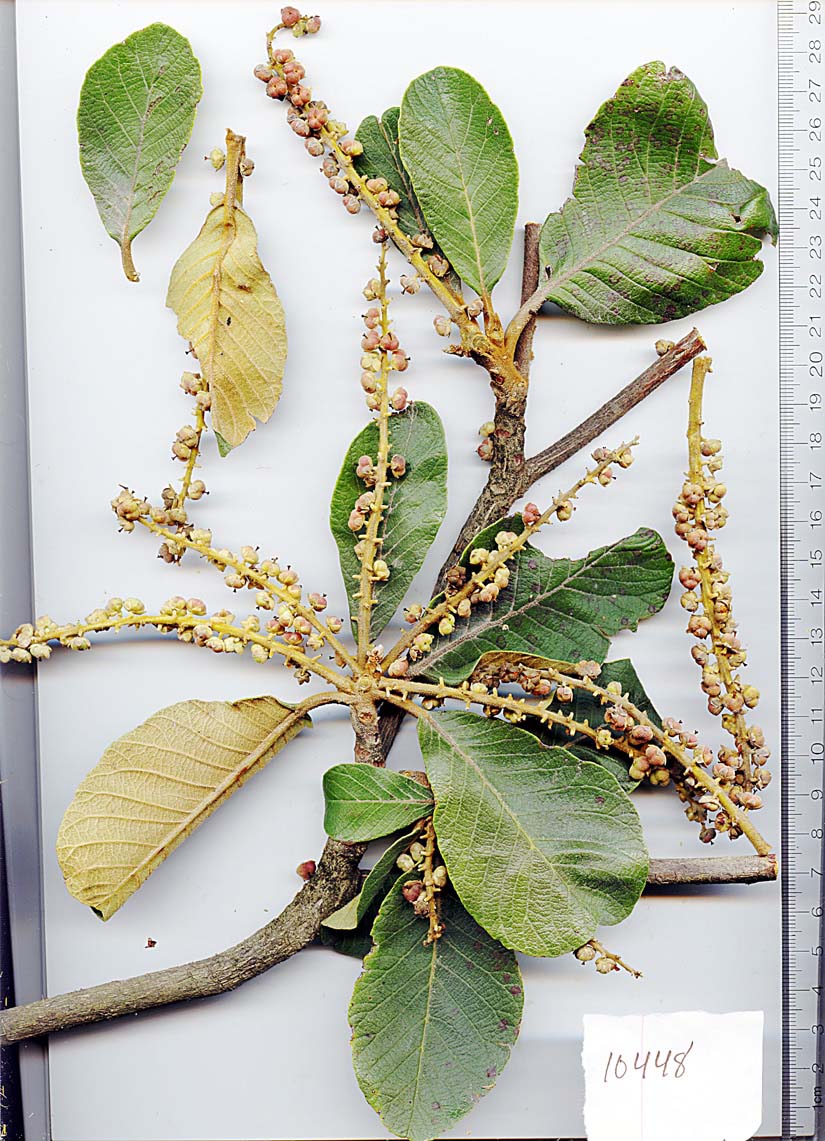
|
Clethraceae |
|
|
Shrubs [trees]. Leaves deciduous [persistent], cauline, alternate, simple; stipules absent; petiole present; blade margins serrate. Inflorescences terminal racemes, solitary or in clusters. Flowers bisexual; perianth and androecium hypogynous; sepals 5, connate proximally; petals 5, connate proximally ca. 1/2 their lengths, corolla cylindric-urceolate; nectary disc absent; stamens 10, in 2 whorls of 5, outer whorl antipetalous, free, distinct or barely adnate to petals; anthers dehiscent by apical porelike slits; pistils 1, 3-carpellate; ovary superior, 3-locular; placentation axile; ovules anatropous, unitegmic, tenuinucellate; styles 1, hollow; stigmas 3, linear. Fruits capsular, dehiscence loculicidal, enclosed by persistent calyx. Seeds [6-]40-100, brown, oblong-ovoid; embryo straight; endosperm oily, well differentiated. Clethraceae is often treated to include only Clethra; studies have shown that Purdiaea Planchet, a neotropical genus of about 12 species (most diverse in Cuba), should be included in Clethraceae rather than Cyrillaceae (J. V. Schneider and C. Bayer 2004). This is consistent with the molecular interpretation of Clethraceae as a sister group to Cyrillaceae and Ericaceae.
|
|
This project was made possible in part by the Institute of Museum and Library Services [MG-70-19-0057-19].
Powered by Symbiota


